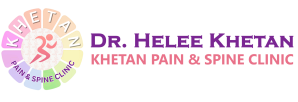Postoperative Pain Relief: A Comprehensive Overview
Postoperative pain relief is a critical aspect of the recovery process following surgery. It aims to minimize discomfort, accelerate healing, and improve overall patient satisfaction.
Understanding Postoperative Pain
Postoperative pain arises from various sources, including:
- Surgical incision: Tissue damage and inflammation.
- Organ manipulation: Internal tissue irritation.
- Nerve injury: Temporary or permanent nerve damage.
Goals of Postoperative Pain Management
- Reduce pain intensity
- Improve patient comfort and mobility
- Prevent chronic pain development
- Facilitate early recovery and discharge
Pain Management Techniques
A multimodal approach, combining various methods, is often employed to effectively manage postoperative pain
Medications
- Opioids: Strong pain relievers, used cautiously due to side effects like constipation, nausea, and addiction.
- Non-steroidal anti-inflammatory drugs (NSAIDs): Reduce inflammation and pain.
- Acetaminophen: Effective for mild to moderate pain.
- Adjuvant analgesics: Medications primarily used for other conditions but can also help with pain (e.g., antidepressants, anticonvulsants).
Regional Anesthesia
- Nerve blocks: Injecting local anesthetic around nerves to block pain signals.
- Epidural anesthesia: Injecting medication into the epidural space for prolonged pain relief.
Regional Anesthesia Non-Pharmacological Interventions
- Ice packs: Reduce swelling and inflammation.
- Heat therapy: Relaxes muscles and improves blood flow.
- Elevation: Reduces swelling in limbs.
- Rest: Allows the body to heal.
- Relaxation techniques: Meditation, deep breathing, and guided imagery can help manage pain.
Patient-Controlled Analgesia (PCA)
A pump allows patients to administer pain medication as needed, providing greater control over pain management.
Importance of Early Pain Control
Addressing pain promptly is crucial for several reasons:
- Improved healing: Adequate pain relief promotes tissue repair.
- Enhanced mobility: Less pain encourages early movement and prevents complications.
- Reduced risk of chronic pain: Early pain management can help prevent the development of chronic pain conditions.
- Increased patient satisfaction: Effective pain control leads to a more positive postoperative experience.
It’s essential to consult with your healthcare provider to determine the most appropriate pain management plan for your specific needs.
